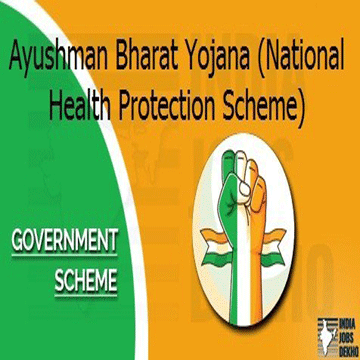
In a recently published article in a national newspaper, titled ‘Why Private Hospitals should join NHPM’, Indu Bhushan, CEO Ayushman Bharat National Health Protection Mission (NHPM), addressed the apprehensions of the private sector and the medical profession on the National Health Protection Mission (NHPM) scheme. The Niti Aayog and the NHPM scheme, unfortunately, seems to have an unrealistic perception of healthcare dynamics. However, fortunately, in this article, he accepts that infrastructure costs were not considered to calculate treatment packages tariff. The NHPM has also not given thought to professional and human resources cost to derive these packages.
Hospital infrastructure costs run to at least a 1000 crore for a big corporate hospital. Most hospitals are constructed with the help of bank loans and need to pay back mortgage EMIs to the tune of 15-20% of the loan amount per annum. A hospital set up with a 500 crore investment needs to pay an EMI of about 100 crores per annum or 8-9 crores per month. Private enterprises need to recover their investment and also pay a reasonable return on investment to the shareholders. Who caters to this shortfall in revenue? It is unreasonable to expect professional medicare to run on unostentatious philanthropy. It is also utopian to believe that drumming up nationalism will make private players forget profit making.
Despite NPPA price control, the cost of medical disposables and medicines is not low. Hospital maintenance and treatment costs are high. Hospitals are skilled-labour intensive businesses, with tremendous payroll burden. The above, not so visible value, is not catered for in the, NHPM pricing model. Private hospitals do not have fixed salaries for doctors but pay them a share based on the patients’ therapeutic procedure billing. For government panel packages, currently, hospitals pay a percentage of the total to doctors. Doctors, working at peak capacity, will earn a princely sum of Rs 30000-75000 per month, if remuneration for NHPM cases is made using a similar professional fee formula. Their earnings thus will be lower than the salary of the junior-most government official.
Another argument put forward by NHPM is that joining the panel will help hospitals reduce losses by filling-up their under-utilised capacity. On notification of NHPM, all beneficiaries will seek treatment at private hospitals, and the government hospitals will be empty. The entire private hospital capacity will be utilised by NHPM beneficiaries leaving no scope to make a profit from paying patients. The process will breed corruption with the false billing such as the use of fictitious treatment codes, reuse of single-use devices.
Specialized medical treatment is expensive all over the world. India is a popular medical tourism destination because healthcare in India costs a third that in other countries. The rates fixed by NHPM should be more realistic and not set arbitrarily considering only certain aspects. It is vital that polity be formulated to make this sector economically viable.
Healthcare is a basic necessity. The central and the state governments have managed to keep the health budget allocations minimal and have gradually become cosmetic players in the Medicare sector. In most countries, health care is treated either as a fundamental right or receives government support while in others, it is dependent on health insurance. In India, it lies in neither of the segments. Governments across the world treat healthcare as social security and allocate a significant part of the budget into national health schemes.
The insurance-based NHPM will entirely shift healthcare to the private sector. If the government does not want to burden the common man with massive health insurance premium, it should provide budgetary support to ensure an effective NHPM. Unless remedial measures are taken, the healthcare apparatus of the country will crumble.
 In a recently published article in a national newspaper, titled ‘Why Private Hospitals should join NHPM’, Indu Bhushan, CEO Ayushman Bharat National Health Protection Mission (NHPM), addressed the apprehensions of the private sector and the medical profession on the National Health Protection Mission (NHPM) scheme. The Niti Aayog and the NHPM scheme, unfortunately, seems to have an unrealistic perception of healthcare dynamics. However, fortunately, in this article, he accepts that infrastructure costs were not considered to calculate treatment packages tariff. The NHPM has also not given thought to professional and human resources cost to derive these packages.
In a recently published article in a national newspaper, titled ‘Why Private Hospitals should join NHPM’, Indu Bhushan, CEO Ayushman Bharat National Health Protection Mission (NHPM), addressed the apprehensions of the private sector and the medical profession on the National Health Protection Mission (NHPM) scheme. The Niti Aayog and the NHPM scheme, unfortunately, seems to have an unrealistic perception of healthcare dynamics. However, fortunately, in this article, he accepts that infrastructure costs were not considered to calculate treatment packages tariff. The NHPM has also not given thought to professional and human resources cost to derive these packages.